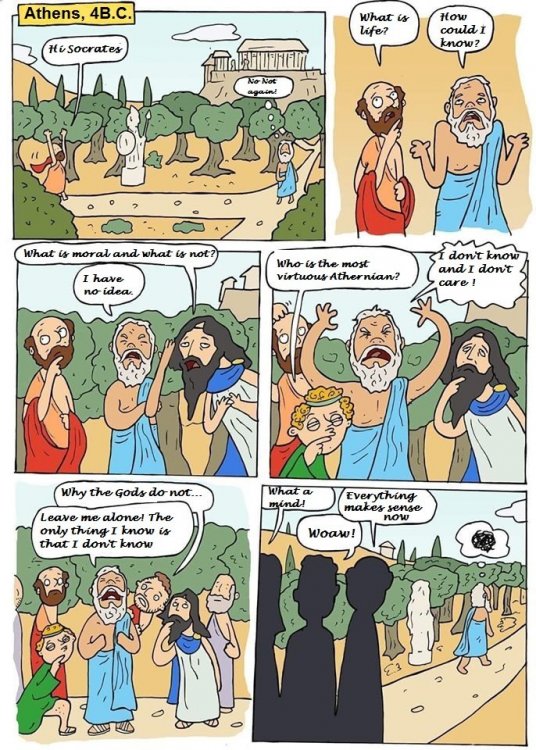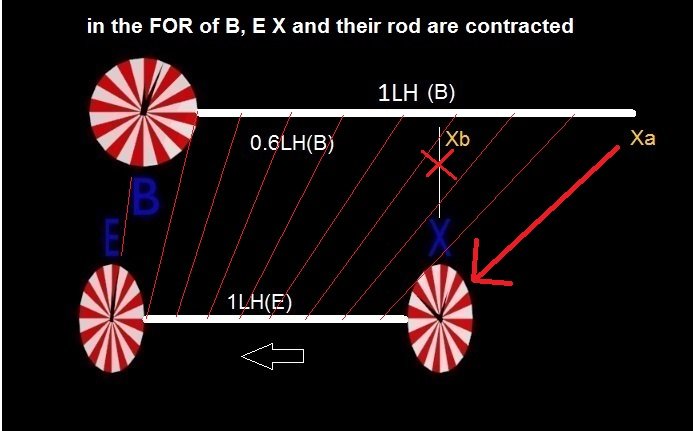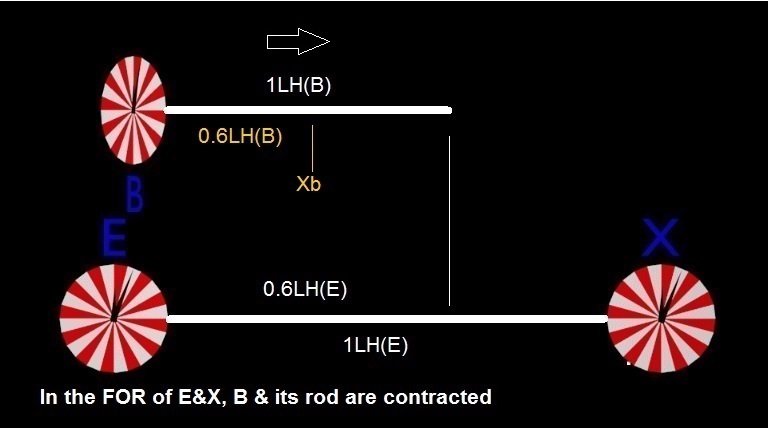-
Posts
6258 -
Joined
-
Last visited
-
Days Won
2
Content Type
Profiles
Forums
Events
Everything posted by michel123456
-
-
My guess is that the wobble appears the same way it appears when a spinning top slows down. https://en.wikipedia.org/wiki/Top#Physics
-

What are you listening to right now?
michel123456 replied to heathenwilliamduke's topic in The Lounge
-
4399 years/2 = 2199.5 before 1400 1400 minus 2199.5 gives -799.5 minus year zero thus 800.5 BC Or 3000 minus 2199.5 = 800.5 BC And FYI (from http://railsback.org/FQS/FQS.html )
-

How to Deactivate My Account??
michel123456 replied to CuriosOne's topic in Suggestions, Comments and Support
Ha. My name is in French, and clearly the special code at the end (123456, my invention & copyrighted) is in French! i was the only one to know that, now you know. -

How to Deactivate My Account??
michel123456 replied to CuriosOne's topic in Suggestions, Comments and Support
Lack of rigor: his name is Curiosone. This is an international Forum. Maybe he is Italian or Swiss (like Toblerone). Or maybe from Curio https://darkestdungeon.gamepedia.com/Curio He (she) only knows. That is why I dislike the minus rep points. -

How to Deactivate My Account??
michel123456 replied to CuriosOne's topic in Suggestions, Comments and Support
Certainly this Forum is not adequate for young people. If it is @CuriosOne's case, I understand his reaction. -
About the "connection lines": Here below an ANALOGY You remember this picture showing foreshortening. Below my own hand from one side % the reverse: Very roughly, let's assume that, as a real measurement, the red distance is the same lenght as the the green one. Because of the effect of perspective, they look different depending on the position of the camera; the "apparent length" is observer dependent. Apparently, length 1 (red) and length 2 (green) are linked by "connection lines" in white color. The situation is perfectly symmetric. The length of line 1 (red) in the first picture corresponds to line 2 (green) in the second, and the length of line 2 (green) in the first corresponds to line 1 (red)in the second. If someone links lines 1 & 2 with a bold red line that "jumps" somehow vertically between lines 1 & 2, it is possible to calculate some result of the operation but the result will correspond to exactly nothing. If you want to "jump" from line 1 to line 2, you must follow the white lines. Otherwise the result is wrong.
-
Some time ago, I learned about the "screaming skeletons", or why archaeologists uncover ancient skeletons & mummies that look like screaming in horrid agony. Your jaw bone ascends toward the back (almost at a right angle to the horizontal line of the teeth), ending in a rounded protuberance (the condyloid process), which fits into a shallow groove in your temporal bone on the lower part of your skull. (For more, see Gray's Anatomy of the Human Body, especially the sections "Articulation of the Mandible" and "The Mandible (Lower Jaw)". (...) The nature of this joint is a key to understanding why mummies scream. Physician Trisha Macnair explains in "Human decomposition after death" on the BBC Health website. "This temporo-mandibular joint is fairly loose.... Unlike the tight ball-and-socket linking the leg and the hip, the jaw and cranium are held together only by ligaments and muscles. If unimpeded--by the position of the body, wrappings, or very fast desiccation--the jaw will drop down as the muscles relax and decompose after rigor mortis." See full article "the screaming mummies" https://archive.archaeology.org/online/features/screaming_mummy/
-
I am very attentive to your analysis. You have time on the vertical axis, distance on the horizontal, and...time again on the horizontal? Ticking at a different rate for the moving FOR? And not ticking for the FOR at rest? Here below the diagram, that as you said is the same with one of Janus (it cannot be totally wrong): The problem with it is that I believe there is a small mistake in it: the vertical line above X. Explanation: the length contraction factor makes a direct link between the 1LH in the FOR at rest and the 1LH in the moving FOR. It remains 1LH length but measured differently. The link is diagonal, like this below: The contraction link goes from Xa to X. It goes from 0,6 LH above to 0,6 LH below. It goes along the thin red lines. There is no vertical link. And there is a way to corroborate, as a posted previously. Take attention at point Xb. This point lies at 0,6 LH as measured by B (at rest). It correspons to the 45min calculated by @Eise, when it is supposed that B reaches X (or X reaches B) as measured by B. See here below: Do you spot point Xb on the diagram? Do you really believe that B will reach X at point Xb? Where is the correct length contraction? Is it between Xb & X (Line 1) or between Xa & B (Line 2)? Don't you see that point Xb is the result of a (erroneous) double contraction (0.6 of a contracted line)? I let you ponder carefully.
-
Is that your objection? (still searching the quote) No, I think that you are wrong there. The distance 0.6 LH is the one from the FOR of E-X. As in diag2. From the FOR of X-E, what B seem to experience is a change of scale. The units are changing. The meters are smaller & the seconds are smaller too (so that velocity remains the same) In its own frame, B does not travel 0.6 LH, it still travels 1LH. diag2 In the FOR of B, in 45 min B will travel & reach point Xb on the following: Do you mean the lengths between the dice? Those lengths are contracted, see (b). Here's a thought experiment to show that the spaces between objects are contracted the same as objects themselves: Consider the dice in their rest frame. Put an enclosure around each die, and connect them with sticks. In the moving frame, everything contracts, and the dice never leave the enclosures. The distance between the dice must contract the same as an object of the same length.
-
Applying MD's rule: From the FOR of X, Is B moving? If B is moving then the distance is contracted. Which, I agree with you, was not the opening statement. Thus we have an inconsistency. ----------------------------------------- Look, I know the distance is 1LH, I am trying to show you that the situation as you are presenting it is not symmetric. That is why @Bufofrog is insisting so much on acceleration. But IMHO it is wrong. There is no account for acceleration in any of the maths formulas that have been used so far. The setting can be imagined with bypassing clocks, not even jumping from one FOR to another, but simply reading instantly the clock in the other FOR. The change of FOR by acceleration is an excuse to avoid the inconsistency. But I believe there is another way to explain what is happening. Look at my diag1 and diag2 again. If you spot an error there please tell me.
-
X is traveling toward B. Exactly as B is traveling toward X The setting is one, these are not two different situations. Simply the observer changes, once in the FOR of B, once in the FOR of X. In the FOR of B the distance to travel is contracted (following your arguments). So in the FOR of X the distance to B should be contracted too, because B is moving. So, being symmetrical, B's time to travel is 45min (following your arguments) and X's time to travel should also be 45 min. Which does not give the expected result.
-
But both are in a stationary frame. It has been stated here that for the observer "at rest" the time to reach planet X is 1h:15min For the "moving" observer it has been stated that it is 45min. Now, if you keep in mind that the situation must be so that you cannot know who is the "moving" and who is the "at rest", you get the confusion I struggle with.
-
In this case, why is it that the situation is not mirrored? I mean, _from the FOR of E, you said that B's clock ticks 45 min while reaching the goal (at X) and _from the FOR of B, you said that X's clock will show 1h:15 while ticking only 23 min. Why such a difference? If all are inertials, the situation should be exactly reversible, isn't it?
-
You could imagine a 3rd "twin", bypassing X in the opposite direction. But that is not necessary, you can consider the outbound trip only, it is sufficient. If there is a temporal difference between the traveling clock & the synchronized clock on planet X, then the paradox will arise. In previous examples on this thread, the concept of "bypassing" instead of "starting" is clearly used to avoid the effects of acceleration. In such a way that all the components, Earth, planet X and traveling clock B are inertial.
-
Nobody said something like that here. It makes no sense to ask who is moving and who isn't. But it does make sense to ask who changes its inertial frame, and who doesn't. I disagree. You can set up the "paradox" without acceleration & without any change in inertial frame. IIRC it has been stated in this same thread previously.
-
This is the world upside down. A paradox is usually an argument that is very (very) bad for a Theory. If a new pet theory was presented here that drives into a paradox, the pet theory would be rejected immediately. In this case, the twin paradox has become a feature of Relativity. As if the paradox helped the Theory, instead of hurting it. Now, some may argue that there is no paradox, because “we know who is moving and who is at rest”. Is that correct? If B moves relative to E, or if E moves relative to B, does it matter for the equations of physics who is “really” moving? I don’t think so.
-
After acceleration, you have even worse: https://en.wikipedia.org/wiki/Jerk_(physics)








